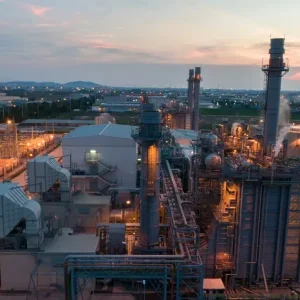Highlights:
- Aton has discovered VMS (volcanogenic massive sulphide) style mineralization at Waayrah;
- Field inspection and sampling of the Prospect has defined the presence of three structurally complex zones of VMS style mineralization, weathered to massive gossans at surface, with at least two of these zones hosting high-grade Au-Zn-Ag-Cu mineralization;
- Initial grab and channel sampling at Waayrah has returned assays up to 16.4 g/t Au, 24.6% Zn, 62.7 g/t Ag and 1.93% Cu;
- Waayrah demonstrates that Abu Marawat may have the potential to host additional VMS deposits, like other VMS camps in the Arabian Nubian Shield. Further, Aton's geologists have recognized potential VMS style mineralization in the Miranda South area, which opens up the possibility that a belt favorable to the development of VMS mineralization may extend between Miranda South and Waayrah.
"We are very pleased to announce this exciting new discovery of VMS style mineralization at Waayrah," said Mark Campbell, President and CEO of Aton. "Prior to Waayrah, the only other VMS style mineralization we had encountered at the Concession was at Hamama, which today hosts the Hamama West Deposit. Waayrah is significant because it demonstrates that the Abu Marawat Concession may have the potential to host additional VMS deposits, like other VMS camps in the Arabian Nubian Shield."
Waayrah Prospect
Waayrah is located approximately 36km east of Hamama. The Prospect is located in the area of a small, relatively modern quarry where iron oxide material was extracted for the local Egyptian pigment industry. During preliminary field inspection of the modern quarry workings, a series of previously undocumented ancient workings were identified on the ridgeline approximately 200m west of, and above the quarry.
Preliminary inspection and mapping of Waayrah has led to the identification of at least three significant gossan zones that appear to represent oxidized VMS horizons. The westernmost horizon is located in the ancient workings, while a thicker eastern gossan unit was identified in the modern quarry. The well-developed quarry gossan horizon has been traced for about 450m along strike and is up to 16m thick. The mineralized gossan horizons are hosted by a NNW-striking package of andesitic to dacitic tuffs, containing minor andesite flows and dipping to the east between 30 to 90 degrees, and are cut by steeply dipping andesite dykes. At its northern extent the western horizon contains a black manganese oxide-barite lithology that appears be a distal exhalite facies, while its southern extension is faulted and obscured at surface by talus. In the central and western gossan horizons, abundant supergene zinc and copper minerals were identified, including hemimorphite and smithsonite. The area is structurally complex with extensive folding and faulting, and the central and eastern gossan horizons are heavily sheared. The local topography is quite rugged, and to the south the gossans are obscured under talus. However, satellite imagery suggests that the stratigraphic package appears to persist for at least 1-km. Accurate mapping and delineation of the gossan horizons is problematical, as much of the area is located on steep slopes, with surface outcrop obscured under talus. Large amounts of gossanous talus on the slopes to the west of the quarry have been identified, however.
An initial total of 38 samples were collected, predominantly channel samples, and some grab samples. Samples were submitted to ALS Rosia Montana in Romania, and were analyzed for gold using fire assay with an atomic absorption finish, and for a 33 element suite of base and trace metals using a 4-acid digest with ICP mass spectrometry.
The results from the initial sampling program are very encouraging, especially the samples from the westernmost gossan horizon, located on the ancient workings, which returned the following assay results: 16.4 g/t Au, 13.4 g/t Au, and 4.03 g/t Au; 24.6% Zn, 20.1% Zn, and 6.26% Zn; 62.7 g/t Ag, and 1.93% Cu. Samples from the central gossan horizon returned assays of 6.15 g/t Au, 20.1% Zn, and 1.22% Cu. Channel samples from the eastern gossan horizon, along the northern and southern ends of the quarry, were less strongly mineralized, but still returned significantly anomalous grades of up to 0.32 g/t Au and 0.76% Zn.
The multi-element assay data shows that the high-grade samples typically also carry significantly elevated values of As, Ba, Cd, Co, Mn, Mo, Ni, Sb, and possibly Tl. This suite of strongly elevated base, precious and trace element values, including Zn, Cu, Au, Ag, Ba, As, Cd, Mo and Sb, would be typically expected from felsic-bimodal (or Kuroko) style VMS mineralization, and implies a significant input of acid magmatic fluids into the hydrothermal system.
The preliminary field mapping, sampling and assay data confirm the discovery of VMS style mineralization at Waayrah. Furthermore, Aton's geologists have recognized potential VMS style mineralization in the south-eastern part of the Miranda South area. The identification of VMS style mineralization at both Waayrah and Miranda South may indicate the potential existence of a NW-striking stratigraphic package that is favorable to the development of VMS mineralization, extending between Miranda South and Waayrah. Further exploration work at the Prospect is a top priority for the Company.






